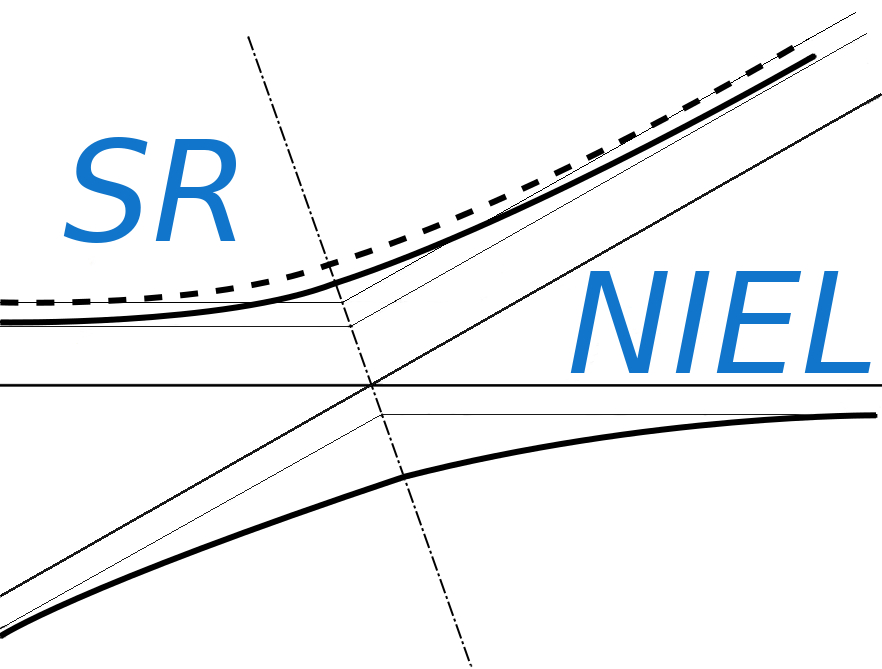This is the Hardness Parameter Web application for neutrons.
The following links give access to the Hardness Parameter code:
- Hardness Parameter Calculator
How to use this Hardness Parameter Calculator
This tool calculates, given the spectral fluence of neutrons as a function of the energy, the fluence, the average energy and the hardness parameter from the ASTM-722 (2009, 2014 and 2019) damage function for neutrons in Si and GaAs. For information about the hardness parameter take a look at the Neutron Damage Function and NEIL page.
The input parameters and options for the tool are described below.
When the input form has been completed, pressing the "CALCULATE" button will start the calculation and open the "Results" page (allow for pop-up in your browser settings).
The result page will be also linked at the bottom of the calculator page.
Input Parameters:
- Damage function
- Target material (Si or GaAs)
- Spectral Fluence vs Energy
- Interpolating Method.
Damage Function
Here it is possible to select the damage function corresponding to different ASTM-722 (2009, 2014 and 2019) standards.
Target Material
In this section it is possible to specify the target material selecting Si or GaAs. The displacement threshold energy will change accordingly (25 eV or 20.5 eV for Si and 10 eV for GaAs).
Spectral Fluence
This section defines the points of the spectral fluence as a function of energy.
The input format is one point per line (Energy - Flux , separated by a space or tab); it is also possible to copy and paste values.
Interpolating Method
This section defines the interpolating method used to obtain the Spectral fluence at the ASTM E722 (2009, 2014 and 2019) energy values.
It is possible to select Step, Linear o Spline interpolating function.
Result
The result page contains the input parameters and the results graph, which contains the input points and the interpolated values.
The result table with the fluence, the average energy, the hardness parameter and the 1MeV fluence equivalent is given as well.



